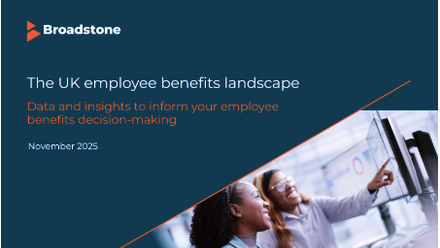5 top tips to ensure your physical wellbeing strategy includes everyone
Many employers have a one-size-fits-all approach to wellbeing in the workplace, but employee needs are ever-changing, dependent on factors such as age, sex and life circumstances.
Tailoring your physical wellbeing strategy is key to ensuring you’re meeting the needs of your people. Here are five tips to help you adapt to the UK’s evolving working landscape.
1. Understand your workforce
The first step to ensuring that you’re delivering an inclusive wellbeing strategy is to understand your staff demographic.
A staggering 75% of companies don’t offer tailored employee benefits, according to research from Towergate Health and Protection.
That means for many people the support offered is just not relevant and therefore a waste of money.
Recognise that people will need different support depending on where they are on their life journey – whether that’s young people struggling with fertility issues, new parents juggling work with childcare demands, women experiencing the menopause or adult carers tasked with looking after an unwell partner or parent.
2. Don’t make assumptions
Do you have the data to highlight the best ways to support your people?
For example, nearly one in five employees in the UK balances work with unpaid caregiving responsibilities, yet this crucial group often goes unseen in DEI initiatives.
Conduct surveys, focus groups or interviews to understand employees’ needs – you might be surprised by what you find.
TSB thought that about 500 of its employees were carers, but after adding the question to staff surveys, discovered that actually one in 11 of its 5,000 UK staff reported having adult caregiving responsibilities.
3. Accessibility is key
It’s important to encourage physical activity across demographics and a great way to do that is to incorporate active spaces such as gyms or fitness areas.
But wellness activities also need to cater to different abilities, interests, and cultural backgrounds.
Consider introducing lunchtime yoga sessions, walking meetings, or group challenges.
Offering virtual options and physical adaptations makes wellness programmes accessible to people with disabilities.
Look at your existing wellness programs to see which are being used and which are not to identify areas where additional support or resources may be needed.
And consult with health professionals such as registered dietitians, exercise physiologists, or mental health counsellors to understand your people’s health needs.
4. Encourage honesty and openness
There are some milestones and challenges that are more socially accepted and discussed: childcare, moving house, moving jobs … even redundancy.
But there are others that are common, but less widely discussed in the workplace.
One in ten women who worked during the menopause have left a job due to their symptoms, according to research by the Fawcett Society.
Talking about menopause openly in the workplace helps reduce stigma and makes women feel more comfortable asking for support.
It also helps others who aren’t experiencing menopause to build empathy towards their colleagues and to understand what they’re going through.
Failing to support staff struggling with fertility issues can also have a significant impact on workplace satisfaction.
One in five people experiencing fertility issues considered leaving their job, according to a study by the CIPD.
A survey conducted by Totaljobs in partnership with the Fawcett Society, meanwhile, revealed that one in five workers who had undergone fertility treatment did actually quit due to the way they were treated during the process.
Similarly, employees who are family caregivers often don’t talk about it at work because they’re worried that colleagues won’t understand what they’re going through.
The silence is often due to the fear that sharing their struggles may impact career growth or suggest a lack of commitment.
Open discussion although not a solution, fosters community and visibility critical to supporting these employees.
5. Recognise the needs of ageing workforce
An ageing workforce brings a different set of challenges for employers.
The shift towards an older workforce is reflected in the fact that UK workers now look after more adult dependants than child dependants.
The highest percentage of unpaid carers are aged 55-59, according to the latest census data.
Caregiving responsibilities can have a surprising impact on an employee's physical health – KareHero found that 82% of carers that work over 50 hours a week are suffering from a physical health effect and 27% have had to visit a doctor about the health effects of caring.
It’s crucial, then, that caregivers are considered when planning an inclusive wellbeing strategy.
Supplied by REBA Associate Member, KareHero
The #1 adult caregiving support service. Helping employees understand, find and fund their care journey.








